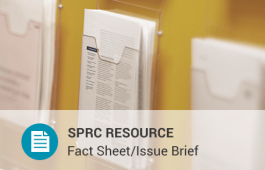Older Adults
Suicide is an important problem among older adults. Suicide rates are particularly high among older men, with men ages 85 and older having the highest rate of any group in the country.1 Suicide attempts by older adults are much more likely to result in death than among younger persons. Reasons include:
- Older adults plan more carefully and use more deadly methods.
- Older adults are less likely to be discovered and rescued.
- The physical frailty of older adults means they are less likely to recover from an attempt.
Risk and Protective Factors
Suicide prevention efforts seek to reduce risk factors for suicide and strengthen the factors that protect individuals from suicide. Here are a few examples:
Risk factors
- Depression and other mental health problems
- Substance use problems (including prescription medications)
- Physical illness, disability, and pain
- Social isolation
Protective factors
- Care for mental and physical health problems
- Social connectedness
- Skills in coping and adapting to change
Reference
- Centers for Disease Control and Prevention. (2014). Fatal injury reports, national and regional, 1999–2014. Retrieved from http://webappa.cdc.gov/sasweb/ncipc/mortrate10_us.html
Learn More
- See the Recommended Resources below selected by SPRC personnel.
- See All Resources Related to Older Adults for a full list of materials, programs, trainings, and other information available from SPRC. Use the filters on the left to narrow your results.
- For more on other groups and settings, see our Populations and Settings pages.

Recommended Resources

Promoting Psychological Health and Suicide Prevention among Older Adults during COVID-19
This sheet provides information on how COVID-19 impacts the psychological health of older adults and strategies for coping, supporting older adults, and seeking professional help.

Increased Access to Mental Health Care for Older Adults: Getting Support during COVID-19
This sheet provides information on mental health care available during COVID-19 for older adults, and links to tools and tips for finding providers.

Reducing Loneliness and Social Isolation among Older Adults
This sheet provides information on the impact of loneliness and social isolation on older adults, tools to identify loneliness, and interventions to reduce loneliness and isolation.

Promoting emotional health and preventing suicide: A toolkit for senior centers
This toolkit provides ideas for integrating suicide prevention into the work of senior centers.
...

Promoting emotional health and preventing suicide: A toolkit for senior living communities
This toolkit contains resources to help staff in senior living communities promote emotional health and prevent suicide...

The role of senior living community professionals in preventing suicide
This sheet provides information to help professionals in senior living communities recognize and respond to suicide ris...
All Resources Related to Older Adults
Displaying 70 results. Refine results using the filters on the left.
NEWS/HIGHLIGHT
Americans on Medicare now get better access to mental health care. Here's how
2024
Read more
Webinar/Training
Pre-application Webinar: Cooperative Agreements to Implement Zero Suicide in Health Systems
2022
Read more
NEWS/HIGHLIGHT
Older Adults Should Pay Close Attention to Mental Health—Especially during Pandemic
2020
Read more
Fact Sheet/Issue Brief
Promoting Psychological Health and Suicide Prevention among Older Adults during COVID-19
2020
Read more
Fact Sheet/Issue Brief
Increased Access to Mental Health Care for Older Adults: Getting Support during COVID-19
2020
Read more
NEWS/HIGHLIGHT
Older Adults in Long-Term Care Need Mental Health, Suicide Prevention Care
2019
Read more
Fact Sheet/Issue Brief
Suicide rates for females and males by race and ethnicity: United States, 1999 and 2017
2019
Read more
NEWS/HIGHLIGHT
Prescription Opioid or Benzodiazepine Abuse and Suicidal Ideation in Older Adults
2019
Read more
NEWS/HIGHLIGHT
COLORADO: As Suicide Rates Rise, Colorado Is Fighting to Turn the Tide
2018
Read more
Fact Sheet/Issue Brief
Characteristics of homeless individuals using emergency department services in 2014
2017
Read more
NEWS/HIGHLIGHT
For Seniors Fighting Grief or Depression, Friendship Line is a Listening Ear
2017
Read more
Toolkit
Get connected: Linking older adults with medication, alcohol, and mental health resources
2017
Read more
NEWS/HIGHLIGHT
New Resource Helps Senior Centers Promote Behavioral Health and Prevent Suicide
2015
Read more
Toolkit
Promoting emotional health and preventing suicide: A toolkit for senior centers
2015
Read more
Fact Sheet/Issue Brief
The role of senior living community professionals in preventing suicide
2015
Read more
Fact Sheet/Issue Brief
Emergency department visits for drug-related suicide attempts among middle-aged adults aged 45-64
2014
Read more
Fact Sheet/Issue Brief
Referenced version - The role of adult correctional officers in preventing suicide
2014
Read more
Guidelines/Recommendations
Suicide risk in adolescents, adults and older adults: Screening
2014
Read more
Report
Asian American and Pacific Islander Initiatives by Garrett Lee Smith Memorial Act Grantees
2013
Read more
Other
It takes a community: Report on the Summit on Opportunities for Mental Health Promotion and Suicide Prevention in Senior Living Communities
2010
Read more
Toolkit
Promoting emotional health and preventing suicide: A toolkit for senior living communities
2010
Read more
Guidelines/Recommendations
Suicide prevention for older adults: Professional Reference Series, Vol. 1
2008
Read more
Guidelines/Recommendations
Elder suicide prevention: A review of best practices and recommendations for state initiatives in Maine
2007
Read more
Guidelines/Recommendations
National guidelines for seniors’ mental health: The assessment of suicide risk and prevention of suicide
2007
Read more
Guidelines/Recommendations
The American Geriatrics Society and American Association for Geriatric Psychiatry Recommendations for Policies in Support of Quality Mental Health Care in U.S. Nursing Homes
2003
Read more
